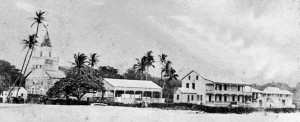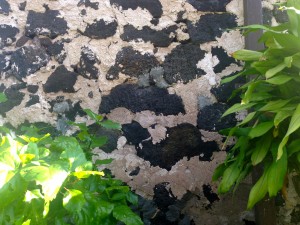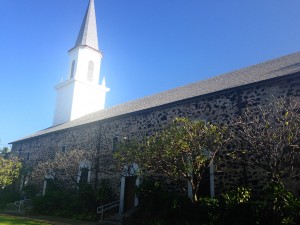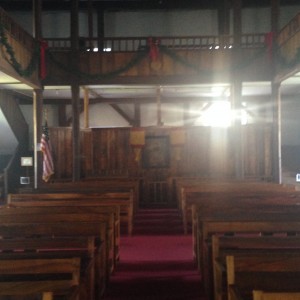In 1820 a company of fourteen New England missionaries with three Hawaiian protégés arrived at Kailua-Kona on the Big Island of Hawai`i. Seven men, seven women – all determined to bring Christianity and American know-how to islands most of them probably couldn’t point out on a map. Two men were ministers; one was a doctor.
The missionaries couldn’t set up shop, so to speak, in Honolulu without the king’s permission. King Liholiho had no use for missionaries, but a doctor could be handy. Permission granted for one year, provided the doctor stayed. The missionaries didn’t think the doctor should remain alone. Actually, they didn’t think he should stay at all, but it was too late to worry about that. The question was, who would stay with him, Rev. Hiram Bingham or Rev. Asa Thurston? According to Bingham’s account, the company cast “ballots.” Thurston took the post, and set to work establishing the first church in the Hawaiian islands. His wife Lucy later recalled, “When Mr. Thurston first commenced his Hawaiian labors in Kailua, the new native church was every Sabbath filled to overflowing.” Which isn’t to say everyone present was interested in religion.
Nevertheless, Lucy Thurston reported, “During the second year of our residence at Kailua, the church became too small for the increasing numbers who would fain attend. Governor Adams then erected another, larger and more commodious [180 feet x 60 feet]. It was superior to any house of native workmanship upon the Islands. When this was burned by an incendiary, the Governor erected a large stone house of worship, with galleries and pulpit. The latter cost five hundred dollars.” By then there were about 5,000 people in the congregation.

This church, begun in 1835 on the site of the first thatched church, became known as Moku`aikaua Church. Thus, the oldest church structure in the Hawaiian Islands. Four thousand people were involved in its construction. When fire destroyed the first effort, rebuilding began immediately, with the second church finished in January 1837. Materials included stones taken from an abandoned heiau, formerly used for indigenous worship, and cast off ballast from sailing ships. The stones were held together by mortar mixed from coral and sand. Oil from kukui nuts was used as a bonding agent.


Moku`aikaua Church, with its 112 foot high steeple, is still the tallest structure in Kailu-Kona. The spire is shingled with corner turrets over the rectangular base.

Inside, the interior posts and beams are made of native `ohi`a wood and held together with `ohi`a wood pins. Fifty-foot spanning beams are also `ohi`a wood. The pews and pulpit are koa wood. The church is 120 feet long and 48 feet wide with New England style galleries and a gabled roof. Moku`aikaua Church is a unique structure, both architecturally and historically. In 1978, it joined other unique American structures with a place on the National Register of Historic Places.
PRESENT CRISIS
Moku`aikaua Church is the oldest property on the 2014 List of America’s Eleven Most Endangered Historic Places, a dubious and unfunded honor. The structure suffers from multiple structural flaws and is almost beyond repair. There are cracks in the stone walls caused by the passage of time and occasional earthquakes (most recently in 2006), dysfunctional and faulty electric wiring (not part of the original structure), extensive termite damage, dry rot to steeple beams and wooden window frames, and water damage from the 2011 tsunami.
So, what’s the plan?
• Shore up the original exterior stone walls
• Connect the roof structure and prevent stone from falling inward during an earthquake
• Preserve and strengthen the roof and steeple
• Repair cracks
• Replace dry rot beams
• Restore existing interior beams, walls, ceilings
Um, how do you do all that?
According to Bret Yager’s recent article in the Hawaii Tribune-Herald,
• “The massive roof, built on ohia [sic] beams, must be raised so the walls can be shored up and reinforced with steel before interior and exterior cracks are filled.”
• Wood affected by dry rot and termite damage must be replaced
• And Yager quotes civil engineer Dave Ross who explained “The entire roof must be reinforced with a diaphragm to make it a single rigid unit and tie it to the foundation.”
How much will that cost?
About $3 million in total. $250,000 to repair the steeple. If you’d like to help, go to Moku`aikaua Church website and donate.
For More Information:
Featured photo of Moku`aikaua Church by Author.
About Moku`aikaua Church
Moku`aikaua Church Home Page – http://www.mokuaikaua.org
Moku`aikaua Church, Hawaiian Encyclopedia – http://www.hawaiianencyclopedia.com/timeline-of-honolulus-historic.asp
Erin Miller, “Concern for Isle’s Holy History,” Hawaii Tribune-Herald, June 24, 2014. Erin Miller, “Kona’s Mokuaikaua Church Named to List of Endangered Historic Places,” West Hawaii Today, June 24, 2014. http://westhawaiitoday.com/news/local-news/kona-s-mokuaikaua-church-named-list-endangered-historic-places
Bret Yager, “Mokuaikaua Church Leaders Lay Out Plans,” Hawaii Tribune-Herald, June 25, 2014. http://hawaiitribune-herald.com/news/local-news/mokuaikaua-church-leaders-lay-out-plans
National Register of Historic Places — http://www.nps.gov/nr/
National Trust for Historic Preservation — http://www.preservationnation.org
About Missionaries: Diaries: The Life & Times of Mrs. Lucy G. Thurston, 1881, pp. 211-213
Hiram Bingham, A Residence of 21 Years in the Sandwich Islands, 1849
My book, Sojourners Among Strangers (1990) uses original sources to explain why the first two groups of missionaries came to Hawai`i. More details. (I agree. The price is outrageous. In fact, it’s embarrassing. The money goes directly to the publisher. But, ask for it at the library — you know, those old buildings with musty books.)

Sandra Wagner-Wright holds the doctoral degree in history and taught women’s and global history at the University of Hawai`i. Sandra travels for her research, most recently to Salem, Massachusetts, the setting of her new Salem Stories series. She also enjoys traveling for new experiences. Recent trips include Antarctica and a river cruise on the Rhine from Amsterdam to Basel.
Sandra particularly likes writing about strong women who make a difference. She lives in Hilo, Hawai`i with her family and writes a blog relating to history, travel, and the idiosyncrasies of life.

